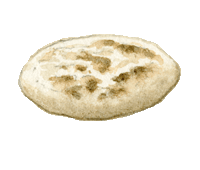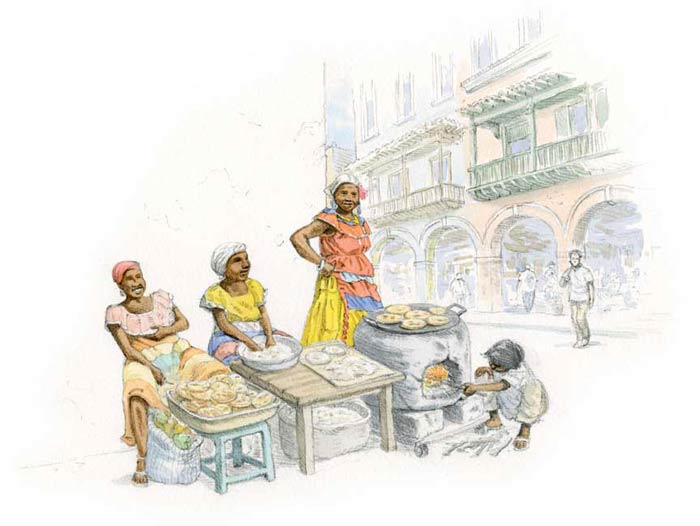Arepa

Form: Griddlecake or flat bread
Country of origin: Venezuela and Colombia
What distinguishes it from other methods of bread making: Corn soaked the day before bread is to be made
Category of bread: (2) Similar to Mexican corn tortilla, Salvadorian pupusa, and Jamaican bammy
Particularity: Whether filled or eaten with meal, it is an essential part of the Columbian diet
Ingredients: Ground corn or maize (or cornmeal); water; salt; oil for cooking

Venezuela and Colombia
Columbian or Venezuelan arepa is a flat corn bread, almost exactly like a Mexican corn tortilla. It is also found in Brazil (beiju), in the Amazon (marapatá), in Chile (catuto, or “stone bread"), in El Salvador (pupusa), in Jamaica (bammy), etc. Like all these griddlecakes, arepa is made, served and eaten in just about every way possible. It is possible to place it alongside the corn tortilla and manioc cassava bread as the three fundamental components of bread making, as the Europeans called it at the end of the 16th century, in the New World.
Like tortillas, arepa is made by soaking corn in an alkaline solution, which facilitates its crushing. This process is referred to as nixtamalization. The dough obtained from this is called nixtamal (from nixtamalli in Nahunta, an Aztec language), is cooked on a griddle, terra cotta pan, grill or in the oven. It can also be fried.
There are an extraordinary variety of these griddlecakes made in both Columbia and Venezuela, and more generally in the entire Andean and Mexican territories. Examples are arepa de huevo, to which a raw egg is added before frying; arepa de chicharrón, made with pork rind; arepa de queso, made with cheese; arepa de antioqueña, made in the Antioquia region of Columbia, eaten with mondogo, a tripe and vegetable soup; reina pepiada, topped with chicken, avocado and mayonnaise, etc.

